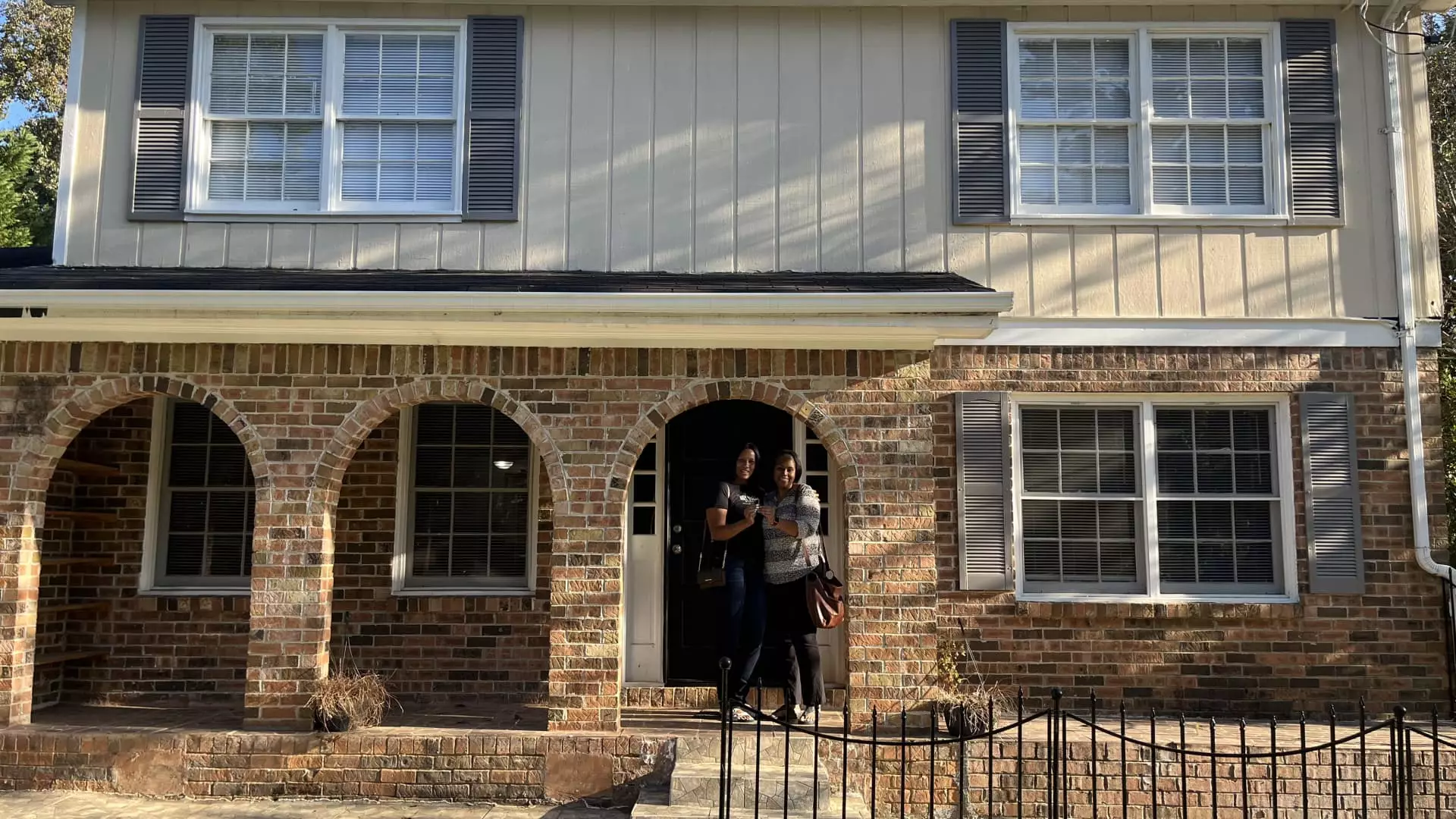In recent times, many potential homebuyers, like 30-year-old social worker When Will Hunnicutt, find themselves grappling with a challenging housing market. The search for affordable housing often resembles an uphill battle marked by high rental prices and stringent application processes. Hunnicutt’s experience reflects the frustrations faced by many renters—particularly in rapidly growing urban environments like Atlanta. With the expectation to fulfill an income-to-rent ratio of three-and-a-half times the rent for a multitude of properties, many discover that justifying a $3,000 monthly lease on a social worker’s salary can quickly feel overwhelming. Such personal anecdotes underscore larger economic trends and highlight the urgent need for innovative housing solutions.
However, hope arrived for Hunnicutt when he discovered a more budget-friendly option: a two-bedroom apartment with a monthly lease of $1,050. This unique arrangement links him to Roots, a pioneering real estate investment trust (REIT) designed to empower renters in their journey toward homeownership. This program not only encourages good rental practices (like timely rent payments) but also assists in building wealth through financial incentives, including a security deposit that is utilized for investments aimed at homeownership. For Hunnicutt, these initiatives provide not just shelter but the promise of financial growth. In an era plagued by rising housing costs, the innovation behind programs like Roots could set a precedent for expanding homebuyer access.
The dream of owning a home feels increasingly unreachable for many Americans, especially as market dynamics push typical home prices higher. According to nationwide brokerage data, prospective homebuyers now require an annual income of approximately $113,520 to purchase a standard U.S. home. This figure highlights a significant gap, as it surpasses the average income of a typical household by 35%. Compounding this issue is the persistent challenge of securing enough savings for a down payment, with a 2023 survey revealing that nearly 40% of non-homeowners cite insufficient savings as their primary barrier to ownership.
To counteract these economic hurdles, many financial institutions, local governments, and non-profits offer a variety of down payment assistance programs. These initiatives are primarily aimed at first-time homebuyers and individuals meeting specific income requirements, creating pathways for those who may lack the resources traditionally expected for home purchases. Furthermore, initiatives targeting first-generation homebuyers are gaining traction, recognizing the unique barriers faced by individuals whose families haven’t had the chance to enter the housing market.
Many down payment assistance programs require participants to undergo homebuyer education training, a critical step towards financial preparedness. These programs help demystify the home-buying process by informing participants about the ins-and-outs of mortgage applications, real estate transactions, and ongoing home maintenance responsibilities. Participants in these programs may also find themselves obliged to meet additional conditions—such as sourcing mortgages from certain approved lenders or saving specific amounts—ensuring a more comprehensive support framework for their journey into homeownership.
Remarkably, financial aid can amount to significant sums, ranging from $9,000 to $20,000 in various states. Such support can make a substantial difference for individuals lacking generational wealth. Nevertheless, as national housing experts indicate, access to these programs remains disproportionately limited, particularly for communities affected by historical inequities like redlining and predatory lending.
A common misunderstanding among potential buyers is the belief that they must provide a 20% down payment, a myth that discourages many from pursuing homeownership. Research indicates that first-time buyers typically make down payments around 8%, with some mortgage options requiring as little as 3.5% or even no money down. Despite these lower thresholds, buyers need to remain diligent about the implications; putting less than 20% down can necessitate private mortgage insurance (PMI), which contributes to monthly expenses but can often be dropped once the homeowner accumulates enough equity.
As potential homeowners consider their financing options, advice from financial planners emphasizes the importance of preserving retirement funds, such as 401(k)s or individual retirement accounts (IRAs), for their intended purposes. While down payment assistance programs offer innovative solutions, it is crucial for individuals to adopt a balanced financial strategy encompassing both savings and investments tailored for long-term goals.
The path to homeownership is fraught with complexities and challenges, particularly for those navigating economic disparities and systemic barriers. Initiatives like Roots, alongside various down payment assistance programs, offer life-changing prospects, signaling a movement toward making the dream of owning a home more attainable for diverse populations. As we collectively strive for equity in housing, continued engagement, education, and support will be paramount in reshaping the landscape of homeownership for future generations.

